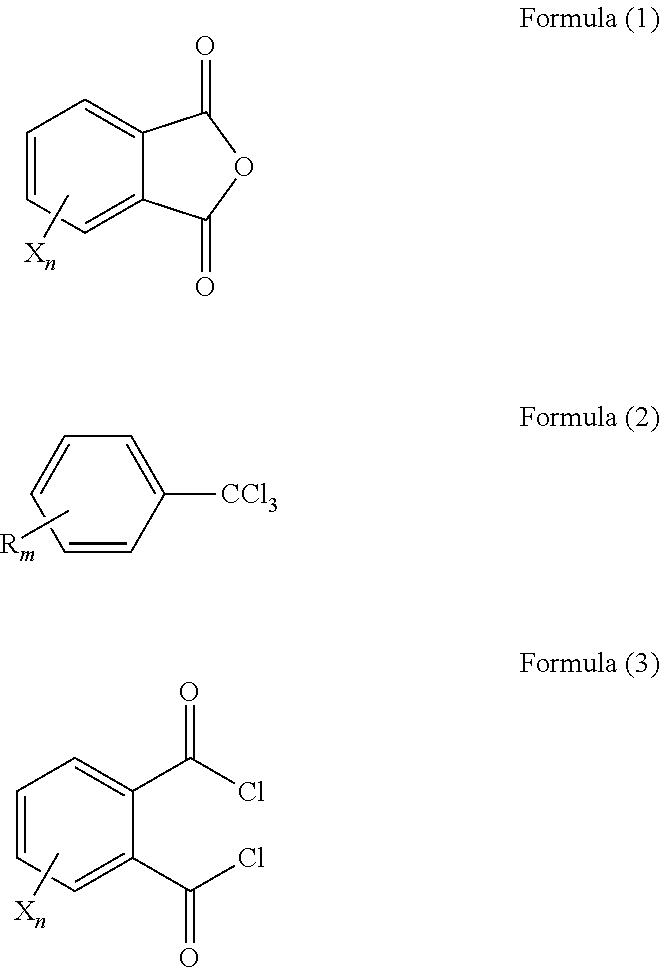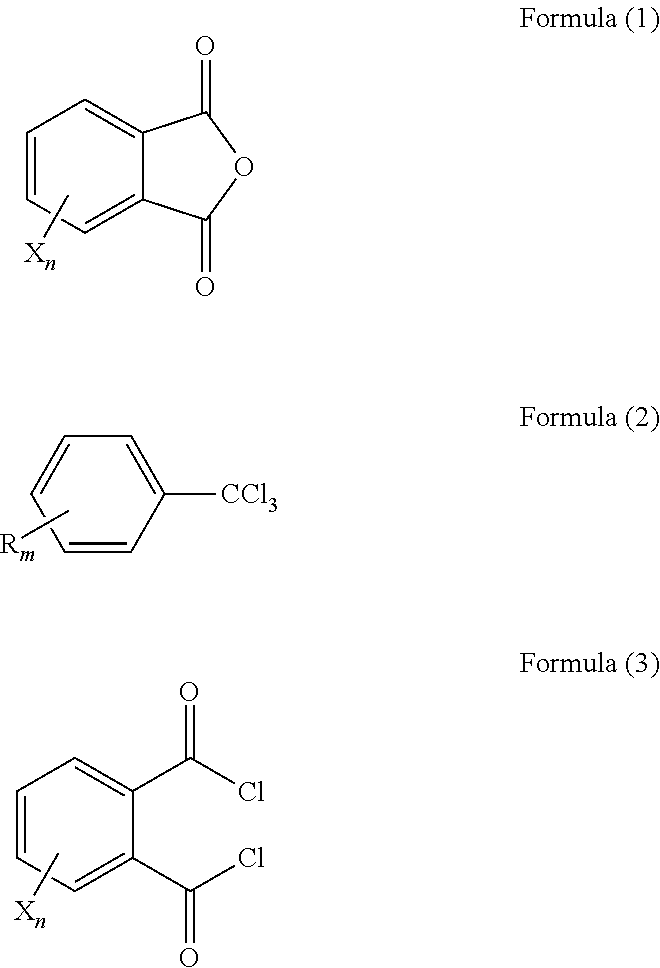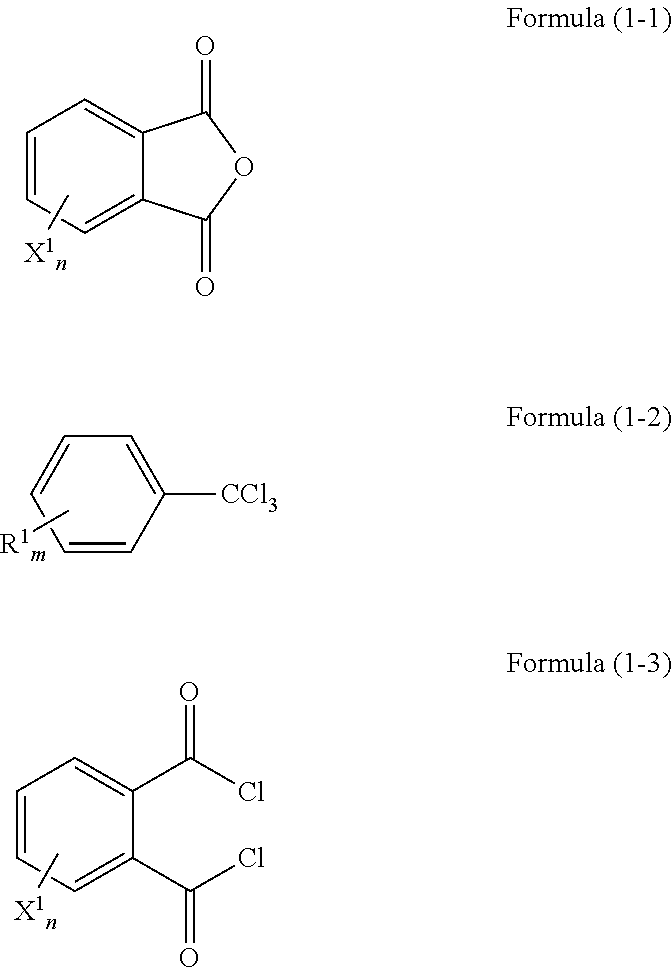Method of producing phthaloyl dichloride compound, catalyst for use in the method, and method of forming the catalyst
a technology of phthaloyl dichloride and compound, which is applied in the preparation of carboxylic acid halides, physical/chemical process catalysts, halogen oxides/oxyacids, etc., can solve the problems of high production cost, waste containing a massive amount of phosphorus, and multi-step production processes using a massive amount of chlorine, etc., to achieve high yield, convenient use method, and superior handling
- Summary
- Abstract
- Description
- Claims
- Application Information
AI Technical Summary
Benefits of technology
Problems solved by technology
Method used
Image
Examples
example
[0103]Hereinafter, the present invention is explained in detail on the basis of Examples. However, the invention is not limited thereto. Further, hereinafter, “%” refers to “% by mole”, unless otherwise indicated.
first embodiment
Examples Involved in First Embodiment
Example 1-1
[0104]In a 2L volume 4-necked flask, 444 g (3.0 moles) of phthalic anhydride, 690 g (3.0 moles) of 1-chloro-4-(trichloromethyl)benzene, and 0.9 g (3.8 mmoles, 0.13% with respect to phthalic anhydride) of anhydrous zirconium chloride were placed, and heated at 160° C. While keeping this temperature, 345 g (1.5 moles) 1-chloro-4-(trichloromethyl)benzene was added dropwise to the reaction mixture over 3 hours, and then stirring was still continued for 3 hours.
[0105]With respect to a liquid sample 1a that was already reacted, analysis was performed by gas chromatography (GC 2014 {trade name}, manufactured by Shimadzu Corporation, column: INERT CAP 5 {trade name}, manufactured by GL Sciences Inc., were used. The same goes for the following Examples and Comparative Examples). As a result, it was found that 0.82% of phthalic anhydride remained in the liquid sample 1a. The liquid sample 1a that was already reacted was distilled under reduced p...
example 1-2
[0106]A reaction was performed in the same manner as in Example 1-1, except that a 1 L volume flask was used and the amount of zirconium chloride in Example 1-1 was reduced from 0.13% to 0.065%. Namely, a mixture of 111 g (0.75 moles) of phthalic anhydride, 258 g (1.13 moles) of 1-chloro-4-(trichloromethyl)benzene, and 0.11 g (0.065% with respect to phthalic anhydride) of anhydrous zirconium chloride was stirred at 160° C. for 22 hours. A liquid sample 2a that was already reacted was distilled in the same manner as in Example 1-1, thereby obtaining sample 2. Gas chromatographic analysis of the sample 2 confirmed that 0.90% of phthalic anhydride remains and phthaloyl dichloride with a purity of 98.9% has been produced.
PUM
| Property | Measurement | Unit |
|---|---|---|
| temperature | aaaaa | aaaaa |
| temperature | aaaaa | aaaaa |
| temperature | aaaaa | aaaaa |
Abstract
Description
Claims
Application Information
 Login to View More
Login to View More - R&D
- Intellectual Property
- Life Sciences
- Materials
- Tech Scout
- Unparalleled Data Quality
- Higher Quality Content
- 60% Fewer Hallucinations
Browse by: Latest US Patents, China's latest patents, Technical Efficacy Thesaurus, Application Domain, Technology Topic, Popular Technical Reports.
© 2025 PatSnap. All rights reserved.Legal|Privacy policy|Modern Slavery Act Transparency Statement|Sitemap|About US| Contact US: help@patsnap.com



